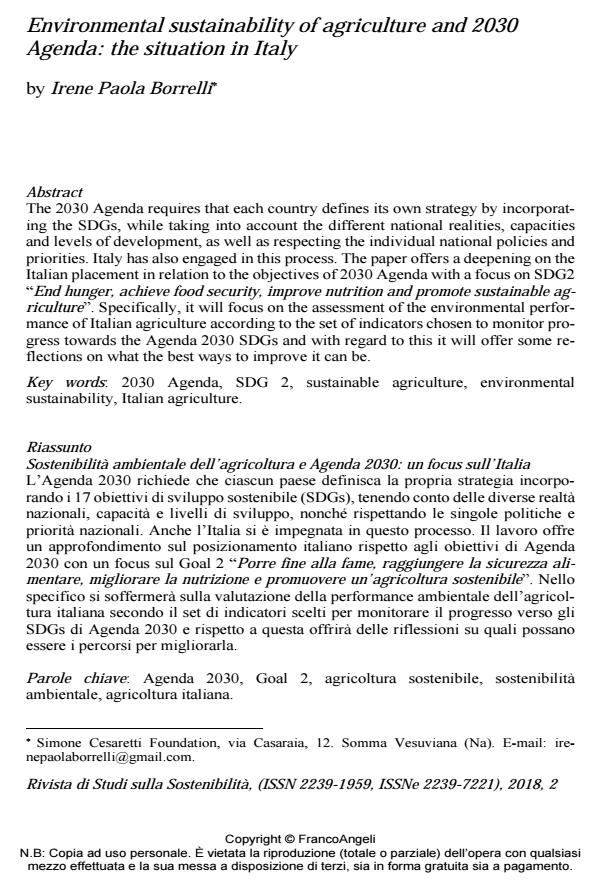Environmental sustainability of agriculture and 2030 Agenda: the situation in Italy
Journal title RIVISTA DI STUDI SULLA SOSTENIBILITA'
Author/s Irene Paola Borrelli
Publishing Year 2019 Issue 2018/2
Language English Pages 19 P. 85-103 File size 295 KB
DOI 10.3280/RISS2018-002006
DOI is like a bar code for intellectual property: to have more infomation
click here
Below, you can see the article first page
If you want to buy this article in PDF format, you can do it, following the instructions to buy download credits

FrancoAngeli is member of Publishers International Linking Association, Inc (PILA), a not-for-profit association which run the CrossRef service enabling links to and from online scholarly content.
The 2030 Agenda requires that each country defines its own strategy by incorporating the SDGs, while taking into account the different national realities, capacities and levels of development, as well as respecting the individual national policies and priorities. Italy has also engaged in this process. The paper offers a deepening on the Italian placement in relation to the objectives of 2030 Agenda with a focus on SDG2 "End hunger, achieve food security, improve nutrition and promote sustainable agriculture". Specifically, it will focus on the assessment of the environmental performance of Italian agriculture according to the set of indicators chosen to monitor progress towards the Agenda 2030 SDGs and with regard to this it will offer some reflections on what the best ways to improve it can be.
Keywords: 2030 Agenda, SDG 2, sustainable agriculture, environmental sustainability, Italian agriculture.
Irene Paola Borrelli, Environmental sustainability of agriculture and 2030 Agenda: the situation in Italy in "RIVISTA DI STUDI SULLA SOSTENIBILITA'" 2/2018, pp 85-103, DOI: 10.3280/RISS2018-002006